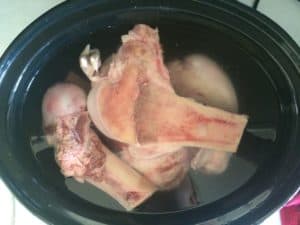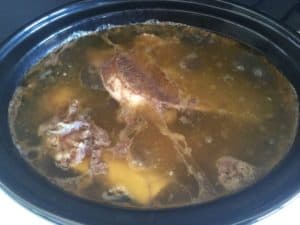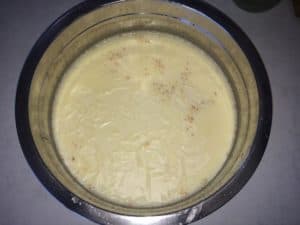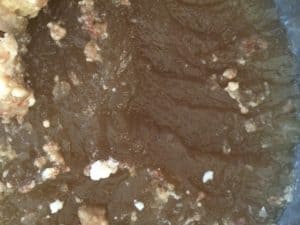In the last couple of years, a staple in my freezer has been the old age remedy of bone broth. This is particularly good in winter time when most of us are craving warming foods such as soups and stews. But can also be used as a base for many recipes.
Grandma’s theory of broths and chicken soup for a cold definitely had some basis to it. Broths contain many essential vitamins and minerals. It is a nutrient-dense food source. Gelatin which is present in broth is gaining popularity for healing the digestive system. And with the high levels of food intolerances and digestive upsets, this is becoming increasingly important. Irritants to the digestive system such as gluten or parasites (worms) tend to make the gut ‘leaky’ which means proteins and substances move through the intestinal lining which they shouldn’t do as this causes the immune system to mount a response, which leads to further food intolerances and sensitivities. The digestive system also has been estimated to hold as much as 80% of our immune system.
Gelatin contains three amino acids (amino acids are essential to our health as they are the building blocks for protein) glycine, proline and hydroxyproline, these make connective tissue which can help to repair the ‘holes’ in the intestines. The gelatin is in the cartilage, tendons and ligaments of the bones which are cooked up into broth.
How to make broth
Buy some broth or marrow bones from your local butcher. They are quite cheap. I paid $5 for a large bone that also needed a hacksaw to fit it in my biggest saucepan. Alternatively, you can use leftover fish bones or a chicken carcass.

Fill the pot with water and add a few tablespoons of vinegar. This is optional but recommended to draw the minerals from the bones.

Simmer very gently for a long time. This is where a big slow cooker comes in handy.
- Fish only need around 2 hours.
- Chicken around 6-8
- Beef 12-24 hours
Skim off any of the scum that floats to the top.
When the broth is done, remove the bones and strain the mixture through a colander.

Place in a bowl to cool overnight. The fat will rise to the top and solidify.

Divide into jars for storage, firstly cooling to room temperature, then refrigerating, and then freezing if you would like. You can choose to keep the layer of fat on top and return to the liquid, or discard it. As the myth regarding the evils of fat has been busted, I recommend keeping it for flavour and sustained energy from the meal you eventually create with your broth

What to do with it
You can use your broth in place of stock in any recipe. It makes an excellent base for soups and stews. You can actually drink it on it’s own as well. I add a little bit to everything, even as a bit of extra liquid in stir fries.
Who would benefit from drinking bone broth?
The short answer is everyone!
But more specifically, anyone with any kind of digestive system complaint or immune system deficiency. Children who are fussy eaters would benefit greatly as they can choose their own vegetables and even if it is just carrot and peas added, you know that they’re getting a good dose of essential vitamins and minerals anyway.
It is also of benefit after any infection, particularly stomach bugs, as it will heal and repair the digestive system lining.
For general health and wellbeing it is a great way to add nutrients to your meals.
Why is Bone Broth so good
- Good for the immune system.
- Rich in minerals: calcium, magnesium, phosphorus and other trace minerals
- Great for arthritis and joint pain. It contains glucosamine and chondroitin which are often taken as supplements in the older population. These nutrients help restore and maintain arthritic joints.
- Helps restore your gut. Bone broths help to repair the intestinal mucosa (the lining of the digestive system). The mucosa is important in the integrity of the digestive system, which can stop conditions such as ‘leaky gut’ syndrome.
- Contains amino acids such as proline and glycine which make up proteins. Proline is a non-essential amino acid but is a precursor to collagen. Glycine is also non-essential but was shown in one Japanese study to improve sleep quality.
- Contains gelatin and collagen which are good for:
- Bone and joint healing
- Helps support health connective tissue
- Strong fingernails and hair
- May reduce stress induced stomach ulcers
